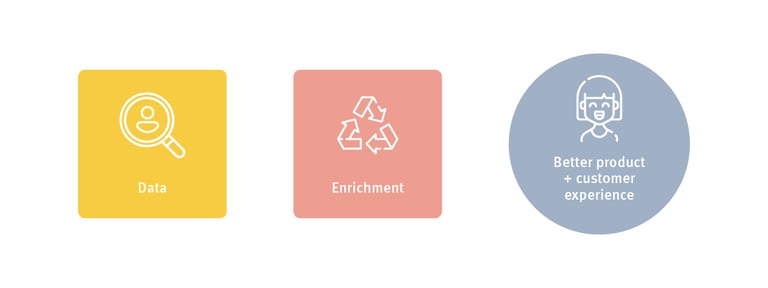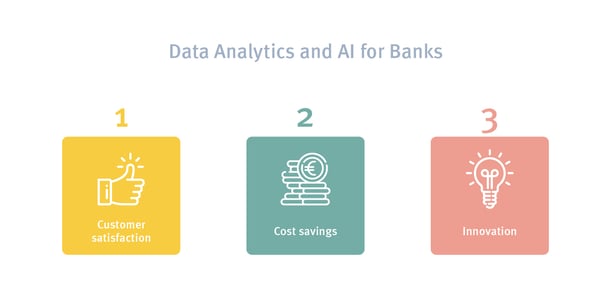The application maturity and availability of artificial intelligence has rapidly evolved for the better in recent years, creating excellent use cases, including in the financial industry. Using AI for valuable customer insights and customer experiences in banking can be a real game changer for your banking activities.
Unlike GAFA, banks have a relationship of trust and a history with their customers and know their banking customer needs in detail. With tailored service and product offerings, personalised communication across channels, useful information and automated processes, your institution will achieve better results, optimise workflows and create a positive working environment for employees. This combination of trust and innovation provides key differentiation points in the highly competitive banking environment.
With applied artificial intelligence and data analytics, you stand out from the crowd by:
- Offering a better customer experience
- Finding the right tone and timing
- Automating repetitive tasks to ensure fewer errors and greater scalability
- Reducing operational costs through automation
- Attracting talent and motivating them with increased freedom
- Assigning employees tasks that correspond to their core competencies, thereby generating real added value for banks
Learn how to lay the foundation for the banking of the future with machine learning and data analytics in our exclusive white paper.
… Don’t miss the opportunity!
Without using artificial intelligence in banking, and therefore missing out on the categorisation and analysis of data, banks are missing out on the most promising opportunity to develop innovative products and achieve better customer targeting based on data insights. No bank can afford to miss out on this opportunity in a market where the number of players is growing exponentially across multiple sectors.
The topic of artificial intelligence is only a black box at first glance. In the banking world, AI can be used very tangibly: you can highly personalise your approach, range of offers and advice based on customer behaviour.
Don’t have the experience or resources for applied artificial intelligence? Many banks feel this way, which is why they’re increasingly opting for strategic partnerships with innovative technology partners. A major study on data-driven banking shows that it’s definitely worth it! How effectively banks use their existing customer data for new forms of personalisation, product innovation or targeting can make all the difference to the customer experience.


